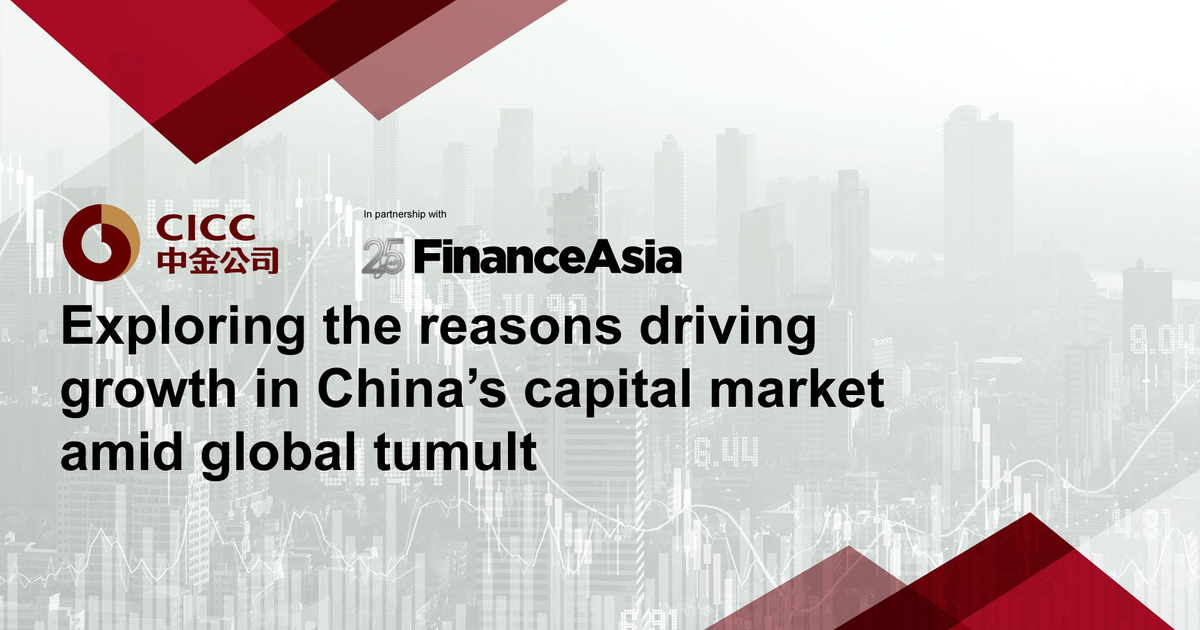In a year in which the financial markets worldwide have been adversely impacted by global uncertainties, China has been a notable exception. At the half year mark, it was the leading market globally for IPOs. To decode the reasons for its exceptional performance and to gain an insight into the trends likely to power its continued growth, Ella Arwyn Jones, editor at Finance Asia spoke to key personnel from financial services company, CICC. The panel included Jia Xu, deputy head of the investment banking department; Jia Jia, deputy head of the equities department; Fusong Xin, co-head of equity capital markets, and Janessa Jia, head of international fixed income.
Ella Arwyn Jones: Through the course of the year, we have seen geopolitical tensions in Europe, inflationary pressure, and of course, relative to 2021, a slump in the number and the value of IPOs globally. How has this impacted China’s capital markets?
Jia Xu: At CICC, we have observed that even in the face of a very complicated and challenging international situation, China stays focused on stability and growth. The Chinese government has conducted a series of economic stability measures to help distressed companies and drive the development of the capital market. As a participant, CICC has seen huge resilience and potential. Despite the year-on-year decline of global equity financing volume for the first eight months of 2022, there were 254 A-share IPOs completed, with a total financing volume of RMB 423 billion. This accounted for nearly 48% of the global IPO financing, making China the world’s largest IPO market.
CICC’s completed IPOs include China Mobile, China National Offshore Oil, Shanghai United Imaging Healthcare, as well as CATL and Daqo Energy’s A-share follow-on offering.
In Hong Kong, the market also experienced a downturn in the first eight months of this year. But CICC has helped our clients overcome the headwinds. We have sponsored 16 IPOs out of the total 48 new listings this year, including China Tourism Group Duty Free Company, the largest Hong Kong IPO to date this year. Others included Tianqi Lithium, Ferretti, and Zhihu with a total financing size of over US$3.2 billion. CICC is proud of the ongoing reform and opening up of China’s capital market.
Ella Arwyn Jones: The recently implemented stock connect initiative allows for easier trading when it comes to ETFs. What have been the developments since that announcement?
Jia Jia: The launch of ETF Connect is meaningful, not just for financial markets, but from a national strategic planning perspective to further deepen reform and opening up of China’s capital market. It helps the onshore equity market become more accessible to foreign investors.
The launch marks another major milestone for mutual market access for both onshore and offshore investors. The first batch of eligible underlying includes four Hong Kong ETFs and 83 mainland ETFs.
As one of the leading brokers in the connected market, we support both ways of ETF Connect trading. Our research team has published multiple papers explaining the mechanism. We have also seen interest in onshore ETFs, from offshore investors, especially in New Energy Sector ETFs. Introducing more flows from international institutions, will eventually translate into better financing, and development of the real economy.
Ella Arwyn Jones: We have spoken about China being an exception to the rule when it comes to the unpromising IPO market globally. What is the outlook on IPOs for the rest of the year across key exchanges?
Fusong Xin: Compared to the weak performance of the major developed markets this year, the emerging markets including India, Southeast Asia, and especially China outperformed in the first half of 2022. Looking to the rest of 2022, IPO pipelines are piling up in global markets, but investors are still cautious. The pace of IPO issuance will probably remain low in the developed markets as investors await positive catalysts to recover confidence.
On the other hand, IPO financing in domestic China — in Shanghai, Shenzhen, and Beijing — is robust, supported by healthy and strong demand from A-share investors. They have also benefitted from capital market reforms in the recent years in mainland China. For example, the introduction of the registration-based IPO regime. The A-share market will continue its outstanding performance in terms of IPO fundraising this year. On the other hand, investor confidence may gradually pick up in the global markets.
Ella Arwyn Jones: Against the backdrop of global uncertainty have you seen a surge in activity and interest when it comes to the relative stability of the fixed income market?
Janessa Jia: The US Fed is no longer taking baby steps to rein in inflation and has adopted the fastest pace of monetary tightening in decades. This leads to a bumpy ride of rates and increasing volatilities in global markets. We’ve seen relative stability in China’s onshore capital markets, despite the negative spreads between China government bonds and the US Treasury yield.
Firstly, the PBOC’s recent rate cut has reinforced the central bank’s determination to stabilise economic growth as its primary goal. The Chinese Yuan has been relatively resilient, versus other major currencies on the back of strong export data and supportive policies. While this may not give dollar investors a return of more than 8% delivered in 2021, it still stands out in the global fixed income market as many are making negative returns this year. We think it’s important that investors remain focused for the long term and restore values throughout economic cycle.
Ella Arwyn Jones: A theme that permeates all conversations in the financial sectors is ESG. Could you give us an update?
Janessa Jia: Even with global slowdowns, ESG has remained a key theme in Asia’s debt capital markets. We’ve seen an increasing volume of ESG bond transactions from Chinese issuers, both onshore and offshore.
For the first seven months in 2022, the China offshore ESG bond issuance volumes stood at $22 billion in aggregate principal amount, representing a year-over-year growth of 24%. As China bonds account for 50% of Asia G3 primary issuance, it allows for more diversified Chinese issuers accessing the global ESG bond markets.
Apart from conventional issuers, we’ve seen an increasing trend of state-owned enterprises issue green and sustainable bonds. The offshore trend is also being echoed in onshore capital markets with encouraging developments.
On July 29, the China Green Bond Standard Committee issued the new China Green Bond principles. This is the first framework issued in China that is consistent with the green bond principles issued by ICMA in terms of core components. This represents a significant unification of standards for foreign issuers to consider China’s green bond markets.
¬ Haymarket Media Limited. All rights reserved.









































